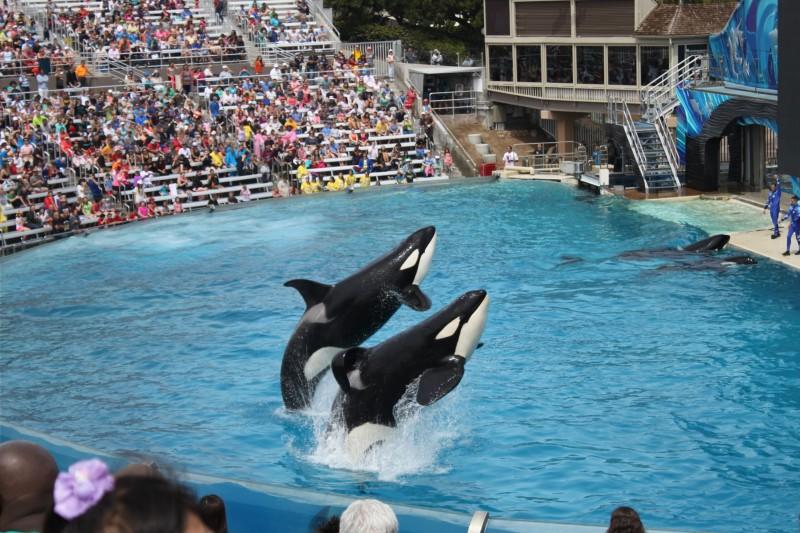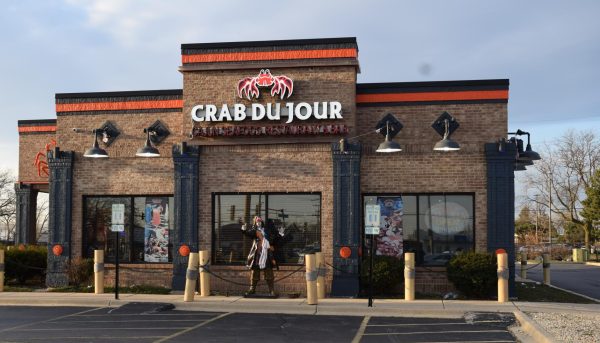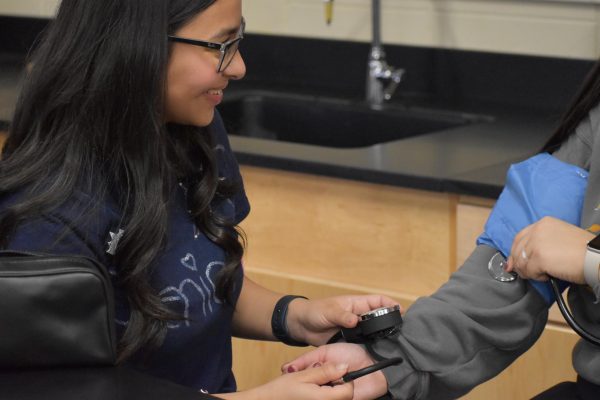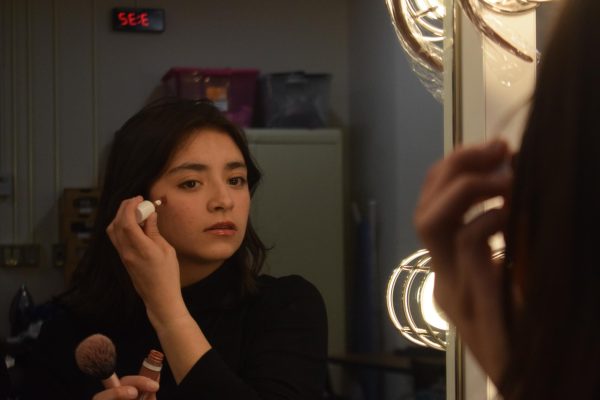End of breeding program helps animals in capivity
Collapsed dorsal fins, seen clearly on the front orca, happens to 100 percent of males in captivity and only to one percent of orcas in the wild, according to the Human Society of the United States. Photo used with permission by Laura Kuehn.
March 23, 2016
An announcement by the CEO of SeaWorld on March 17 could be the start of a revolution in captive animal care.
Joel Manby, who took over as CEO of SeaWorld Parks and Entertainment in 2015, has decided to end the orca breeding program and partner with the Humane Society of The United States. SeaWorld has promised to focus more efforts on preserving wildlife. The move comes as a way to appease public perceptions of how animals are treated at the parks.
The breeding program will come to an end and shows performed by orcas will be phased out by 2019.
The popular documentary “Blackfish” in 2013 helped put the plight of captive orcas in the mainstream media.
“Blackfish” focused heavily on the life of Tilikum, a 35-year-old orca that has been responsible for three human deaths. Tilikum has been used to sire 21 calves for SeaWorld, giving those calves a higher genetic chance to be violent.
Various attacks on humans by orcas have been recorded and some say the reason is that orcas in captivity are too stressed. The lack of space, human activity, and water chemicals used to clean tanks are thought to affect the health and behavior of sea life.
Breeding orcas might be seen as a way to preserve a species that is slowing declining in the wild, but numerous sources have criticized SeaWorld in the past. Various animal rights groups and former employees have done their best to expose the treatment of orcas at SeaWorld.
SeaWorld has had male orcas breed with their mothers, a practice that can lead to birth defects.
As well as cruel breeding and artificial insemination, calves and mothers are separated very early. Orcas are animals that stay in pods for many years, however former employees have reported that SeaWorld separated mother and children as early as 20 months after birth.
Orcas in the wild can swim up to 100 miles a day, according to us.whales.org, yet this is impossible in any sort of enclosure at a park. Almost all the orcas at SeaWorld have collapsed dorsal fins, a feature rare in the wild. SeaWorld definitely puts in a lot of money to care for their animals, but a 28 foot long 8,000 pound mammal cannot live a normal life in a tank.
As well as collapsed dorsal fins, many orcas suffer from skin problems because the shallow tanks forces them to spend most of time at the surface, according to the Humane Society of the United States. The human society also says orcas in the wild spend most of their time submerged in deep dark water.
The move to end the program has been criticized by those that believe that animals will only live in captivity in coming times. A study published by the magazine “Science Advances” in 2015 states we are currently in the largest period of extinctions since the death of the dinosaurs and the cause is mostly from human influences. Orcas and other marine life might not live long if humans keep polluting oceans.
However, even if orcas only survive in the parks, they should be given a better life than being trained as performers and baby making profit machines.














